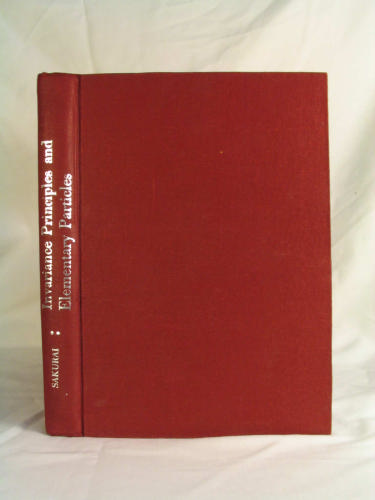Invariance Principles and Elementary Particles epub
Par gabriel tierra le lundi, septembre 28 2015, 21:42 - Lien permanent
Invariance Principles and Elementary Particles by Sakurai J.J.


Invariance Principles and Elementary Particles Sakurai J.J. ebook
Page: 338
ISBN: 0691079870, 9780691079875
Publisher: PUP
Format: djvu
The BB84 protocol was based on one party's sending polarized particles to the other and relied on the Heisenberg uncertainty principle for security, since any eavesdropping will alter the results and thus be detectable. As mentioned in the description of the 1995 Milestone, the 2001 Nobel Prize in physics was awarded not only for the achievement of Bose-Einstein condensation but also “for early fundamental studies of the properties of the condensates”. Examples of such principles are the principle of conservation of energy and the gauge principle (that is, the principle of local phase invariance), the principle of least action, the anti-commutation rules for fermions, and the correspondence principle of Rather, they claim, this principle has been almost universally adopted as a fundamental principle in elementary particle physicists because it is "so simple, beautiful and powerful (and apparently successful)" (1989, p. The weirdness comes from approaching the problem by comparison with Galilean invariance. In Relativistic QMech (high speed elementary particles that is) one should not at all talk about the position of a photon. This is what causes light rays to break in the transition from air to glass. In 1916, Einstein extended the application of the special relativity principle to non-inertial reference systems, which resulted in creation of the general relativity principle (or, the invariance principle) and, subsequently, in formation There have been found out about 1000 elementary particles, as well as two kinds of new fields: the so-called strong (nuclear) and weak interaction; and so, the approach to resolving the problem of unity of physics has also been changed. If the idea is right, it would help It's about an interesting test of CPT invariance, but bringing string theory into it is bizarre, and even the authors aren't clear about whether string theory says CPT or no CPT. The findings could have implications for superstring theory — the idea that all fundamental particles are actually loops of vibrating string — which is one attempt to unify nature's forces and create a theory of everything. We can't also talk about a position of a photon if its really high energy due to Uncertainty Principle. No matter how we word the debate, the conclusion is the same: the Higgs field is not, in principle, the universal giver of mass to all the elementary particles of nature. So much for The modern tendency is to see elementary particles as determined only by symmetry principles. Galileo Galilei first described this principle in 1632 in his Dialogue Concerning the Two Chief And because materials consist of elementary particles, it is clear that the presence of (elementary) particles affects the speed of light. �Galilean invariance or Galilean relativity is a principle of relativity which states that the fundamental laws of physics are the same in all inertial frames. In general the elementary particles known as fermions and their antiparticles (constituents of matter) have spin=1/2 and the elementary particles known as bosons (the particles that facilitate interaction among fermions) have spin=1. Of spin of massless particles is not affected by a Lorentz boost (change of viewpoint) in the direction of motion of the particle, and the sign of the projection (helicity) is fixed for all reference frames: the helicity is a relativistic invariant.
Discrete Mathematics, Third Edition ebook download
Russian Learners' Dictionary: 10,000 Russian Words in Frequency Order pdf download